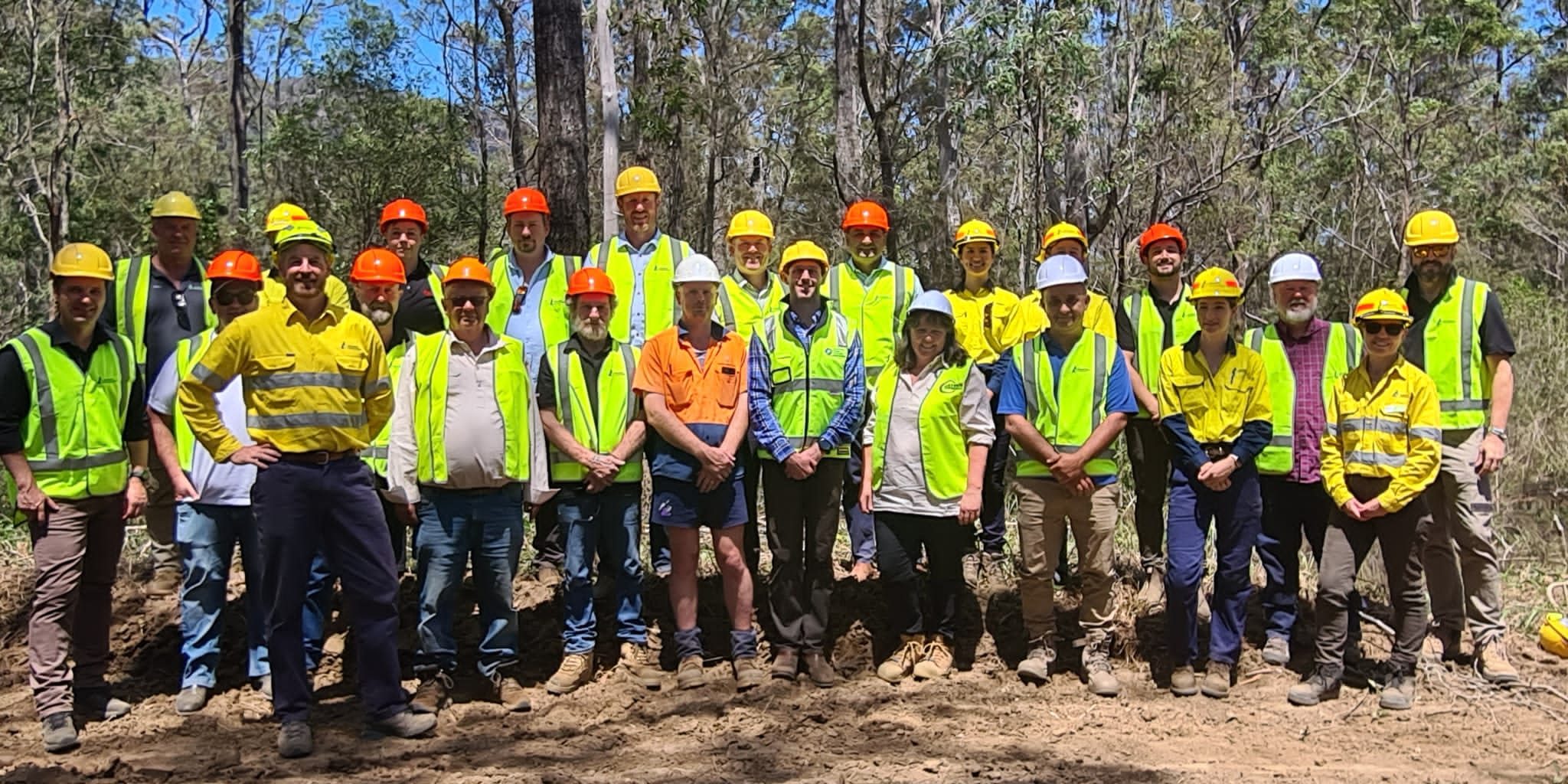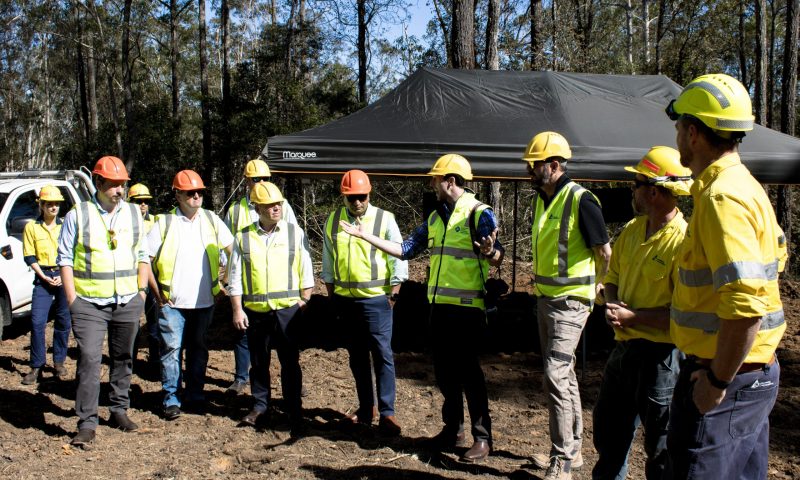Exploring the Future of Sustainable Native Forestry in NSW
In a collaborative effort to showcase the often misunderstood, perhaps overlooked aspects or even at times deliberately mispresented, sustainable forestry practices, Responsible Wood, in partnership with Pentarch Forestry, Forestry Corporation of NSW, the Australian Forest Products Association of NSW, and Timber NSW, recently organised an innovative forestry field trip in Port Macquarie, New South Wales. The event, attended by a diverse group of stakeholders including journalists, members of the NSW parliament, CFMEU Manufacturing Division representatives, and industry supply chain representatives, provided a rare and exclusive glimpse into the world of responsible forest management.
The field trip commenced with a visit to a live forestry harvesting site, where attendees were offered an unfiltered view of the intricate processes of harvesting and processing. Participants had the unique opportunity to witness the rigorous forest planning process, ensuring the protection and management of forestry values before, during, and after harvesting operations. Real-time drone footage showcased the broader operational context, emphasising the importance of retaining trees in riparian zones for habitat, seed, sap, and future selective harvesting operations.
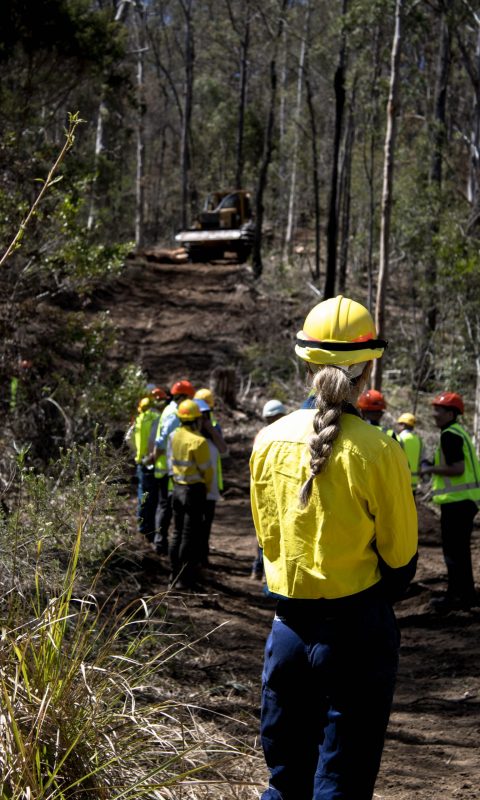
Field trip attendees watch the carefully planned, controlled and monitored process of selective harvesting.
Long-term forest management strategies, estate historical data, yield planning, and the crucial role of certification in demonstrating sustainable forest management were also presented to the engaged audience. Independent verification and third-party auditing underscored the commitment to transparency and accountability in the pursuit of sustainable forestry practices underpinned by the United Nations Sustainable Development Goals and built upon the internationally agreed upon criterion and indicators of the Montreal Process.
The journey continued with a visit to the Burrawan State Forest, home to the southern hemisphere’s largest Red Bloodwood tree – the Old Bottlebutt. Attendees enjoyed a serene walk through the dry rainforest, concluding with insights from renowned experts Dr. Brad Law and Dr. Fabiano Ximenes from the New South Wales Department of Primary Industries (NSW DPI).
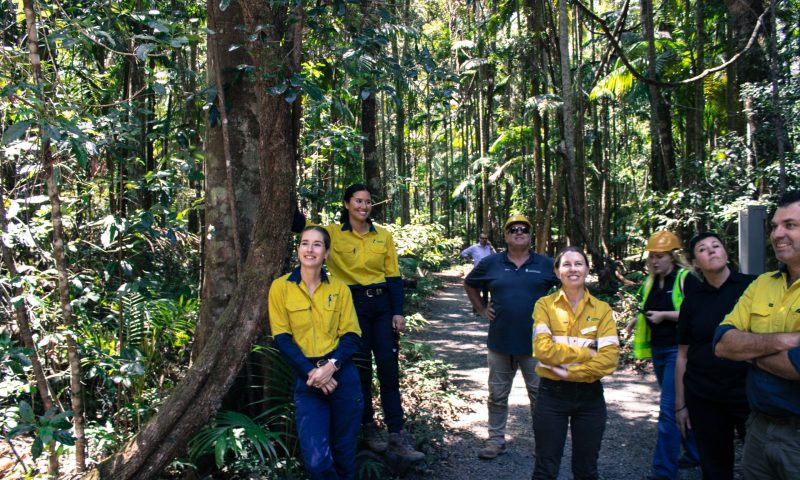
Field Trip attendees walk through the forest to visit the southern hemisphere’s largest Red Bloodwood tree – the Old Bottlebutt
Dr. Law shared findings from a koala tracking project, shedding light on the impact of forest disturbances such as bushfires and timber harvesting on koala populations. The integration of AI to interpret data from acoustic arrays for koala tracking sparked much interest, highlighting the innovative techniques employed in wildlife conservation efforts.
Dr. Ximenes delved into research on carbon release from wood and paper products, providing attendees with valuable insights into carbon sequestration and storage complexities. The discussion extended to the potential of woody biomass crops for bioenergy, with Dr. Ximenes addressing questions on technical assessments related to biomass use for electricity generation.
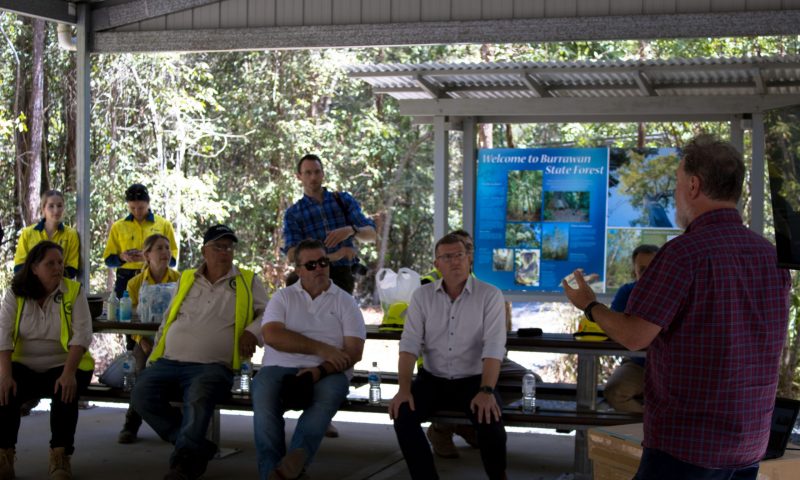
Dr Brad Law (Principal Research Scientist in the Forest Science Unit, NSW DPI) presents research findings from a koala tracking project.
The field trip culminated with a visit to Pentarch’s Herons Creek Sawmill, offering attendees a behind-the-scenes look at how sustainably harvested forest products are processed through a certified chain of custody sawmill. This final stop showcased the journey of certified hardwood products from local processing to distribution throughout Australia.
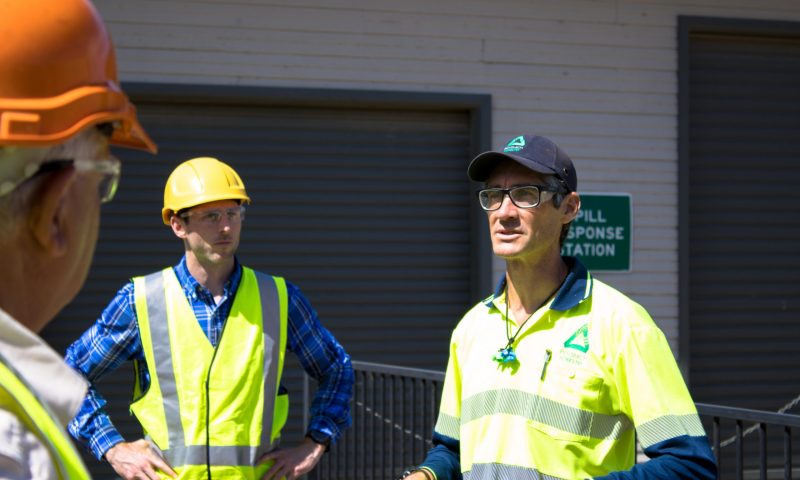
Field trip attendees get a behind-the-scenes look at processing at the Herons Creek Sawmill.
While forestry field trips are not novel, this event stood out for its collaborative approach, bringing together a diverse range of stakeholders to witness forest sustainability in action. Live harvesting, certification credentials, expert presentations, and firsthand accounts from forestry contractors collectively painted a picture of the responsible and sustainable future of Australia’s timber industry. As the curtains closed on this journey of sustainably sourced forest products, participants left with a newfound appreciation for the intricate balance between industry progress and environmental stewardship, undoubtedly intrigued to explore more about sustainable forestry in the future.
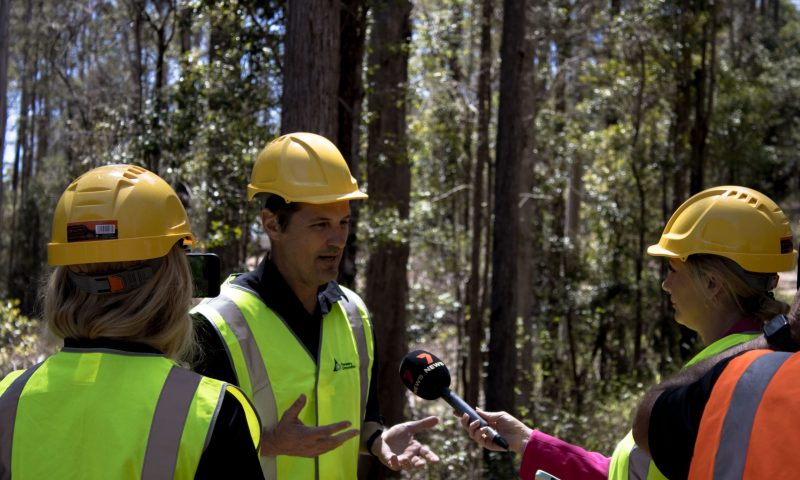
Responsible Wood Sustainability Manager Matt de Jongh speaks to local media about the intricacies of certified forest management

